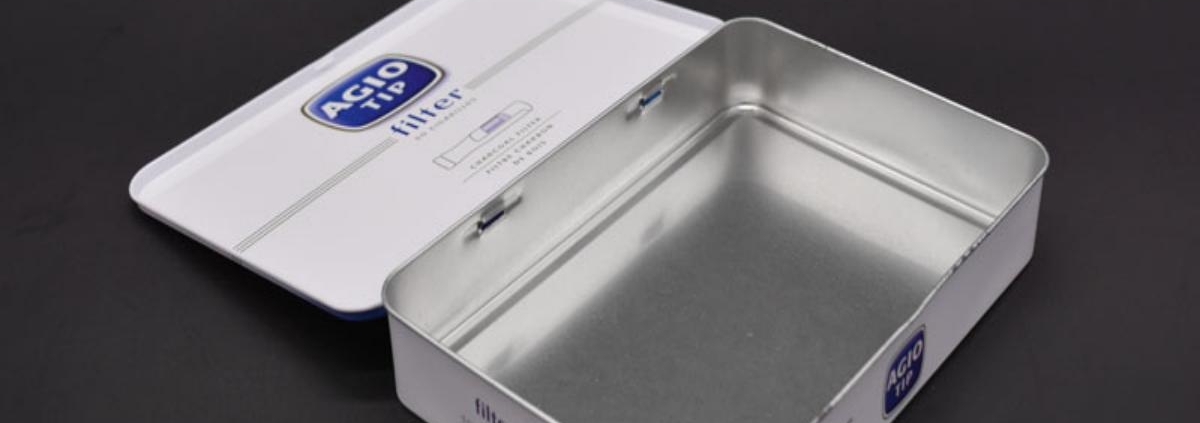Choosing the Right Lid Type for Easy Dispensing from a Cigarette Tin Case
When purchasing a cigarette tin case, choosing the right lid not only enables quick, repeatable one-handed dispensing but also protects the contents from moisture, odors, and mechanical damage. Conversely, an inappropriate lid choice can lead to clogging, filter damage, customer dissatisfaction, and warranty claims. For cigarette manufacturers selling in retail, travel, and promotional channels, lid selection impacts shelf conversion, repeat purchase rates, and downstream operating costs.
Hinged lids are a prime example, offering a wide opening, intuitive one-handed operation, and a distinct tactile feel that consumers often associate with premium packaging. But hinged lids are just one of many options. Other common lid types include friction-fit (slip-on) lids, screw-on lids, magnetic lids, push-button dispensing, and hybrid combinations (such as hinged and magnetic closures).
Cigarette Tin Case – Lid Types: Functional Trade-offs Between Hinged, Friction, Magnetic, and Screw-On Lids
When selecting a cigarette tin case, the first step is to compare lid type with functional priorities. Hinged lids are preferred when fast, one-handed operation, tactile feedback, and a wide opening are required. Well-designed hinges can incorporate detents to keep the lid open at a predictable angle, reducing accidental openings. In contrast, friction-fit (slip-on) lids simplify tools and reduce part count, working well within budgets while maintaining a clean aesthetic.
Screw caps provide an excellent seal, effectively preserve freshness, and manufacturers can equip them with tamper-evident strips. However, their slower dispensing speed can be inconvenient for users who prefer immediate access. Magnetic lids provide excellent resealing and a near-instant opening experience, but increase the amount of material used per unit and slightly reduce assembly complexity. Push-button or single-stick dispenser caps use a metered-release design to minimize contact with other contents. However, they significantly increase tool complexity, assembly steps, and the number of failure modes.
Cigarette Tin Case Ergonomics and Dispensing Performance
Ergonomic design determines whether your cigarette tin will provide a user-friendly experience. Therefore, lid design should be guided by three objective criteria: opening torque (the force required to open or remove the lid), the number and complexity of hand movements, and the clearance needed to extract the cigarette without bending or damaging the filter. The opening torque must be adjusted to prevent accidental opening during transport and to make it difficult to remove the cigarette during use. Designers should carefully design the torque and detent force for hinged lids so that an average adult can flip the lid with a thumb or palm motion while maintaining sufficient resistance to prevent it from opening in a pocket or bag. For friction-fit lids, specify a removal torque range and verify it through batch sampling and lifecycle wear testing.
Sealing, Storage, and How Lids Affect Product Handling and Shelf Life
Cigarette tin lids must protect tobacco from moisture, odor contamination, and mechanical stress, and the choice of lid can influence these factors. Screw caps and sealing hinges provide the best mechanical seal, limiting moisture infiltration and maintaining the consistency of the tobacco for months. If freshness is paramount, manufacturers can combine a sealed lid with an inner foil pouch or use nitrogen flushing during filling; this dual-barrier approach can extend shelf life.
Friction-fit lids can achieve a good seal if a crimped edge or thin gasket is incorporated into the design. However, manufacturing variability often affects these seals, so if the product is moisture-sensitive, additional inspection steps should be added or a slightly stronger seal should be selected. Magnetic lids can be easily resealed, but if airtightness is critical, we will use sealing methods such as a thin silicone lip or liner.
Regulatory, Safety, and Other Factors Influencing Lid Design
Lid type can impact both regulatory compliance and safety. Cigarette tin cases for tobacco products typically must comply with labeling and tamper-evident regulations, as well as, in some jurisdictions, child-resistant or health warning display regulations. Tamper-evident tape or adhesive seals can be easily integrated with removable or friction-fit lids. In contrast, hinged or twist-off lids can have removable seals or plastic tamper-evident strips integrated into the hinge. If your product requires child-resistant packaging, the lid may need to feature a push-and-turn or double-action release mechanism. These mechanisms make easy dispensing more challenging and necessitate careful human factors testing, while also preventing accidental opening by children.
The Impact of Different Lid Types on Manufacturing, Processing, Cost, and Quality Control
The choice of lid affects the complexity, unit cost, and process stability of the cigarette box mold. Hinged lids require more precise molds and often require secondary molding or assembly steps to form the hinge. For high-volume production, automated hinge assembly can quickly amortize costs, but the initial mold investment is higher. Friction-fit lids typically utilize simpler stretch and crimp molding, resulting in lower mold costs and shorter cycle times. However, they require stringent process capabilities to ensure consistent press-fit tolerances across batches and coating types.
Magnetic covers require a plug-in placement step, which increases the material cost of the magnet; the dispensing mechanism increases assembly time, part count, and the probability of failure modes. Screw-on lids, while reliable, may require threading or multi-stage molding, which can extend production cycles. High-end hinged magnetic products may significantly increase unit costs, but can offer higher retail prices and more substantial brand value. Conversely, for high-volume promotional gifts where cost is a primary constraint, friction-fit products may be a more suitable option.
Enhancing the Consumer Experience Through Lids
The lid of a cigarette pack is key to the user experience. Its mechanical structure and surface finish impact the consumer’s experience every time they open and use the product. A carefully selected lid should combine dispensing ergonomics with the brand promise. A hinged lid’s crisp snap-on design is ideal for premium product lines. A magnetic closure complements a minimalist, luxurious finish, and a friction-fit lid combines practical aesthetics for promotional cans. Design should integrate functional requirements with manufacturing realities to create a lid that is both fit-for-purpose and meets market objectives.




 Facebook
Facebook Twitter
Twitter Linkedin
Linkedin